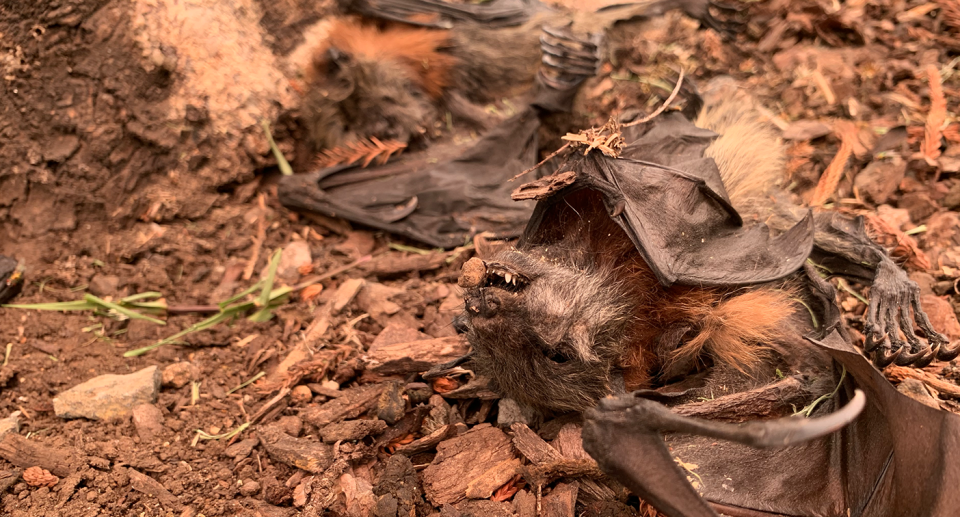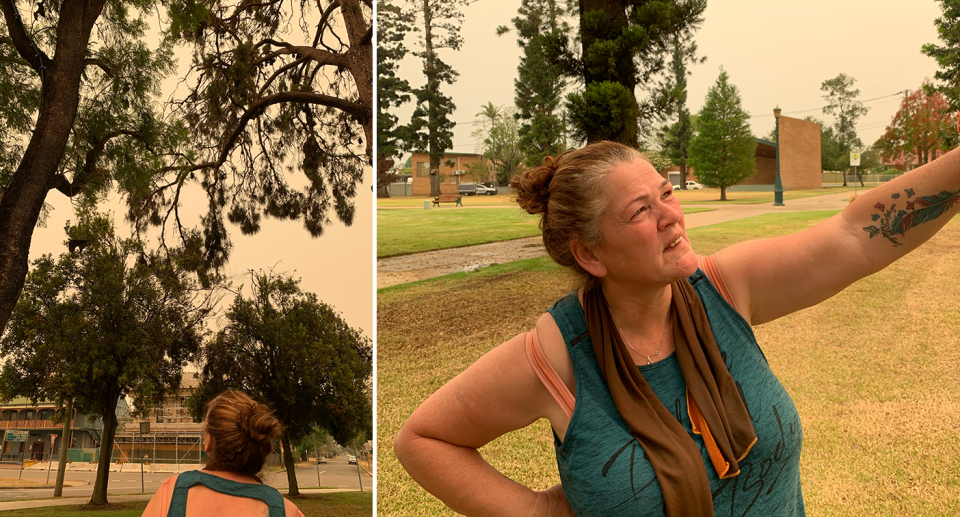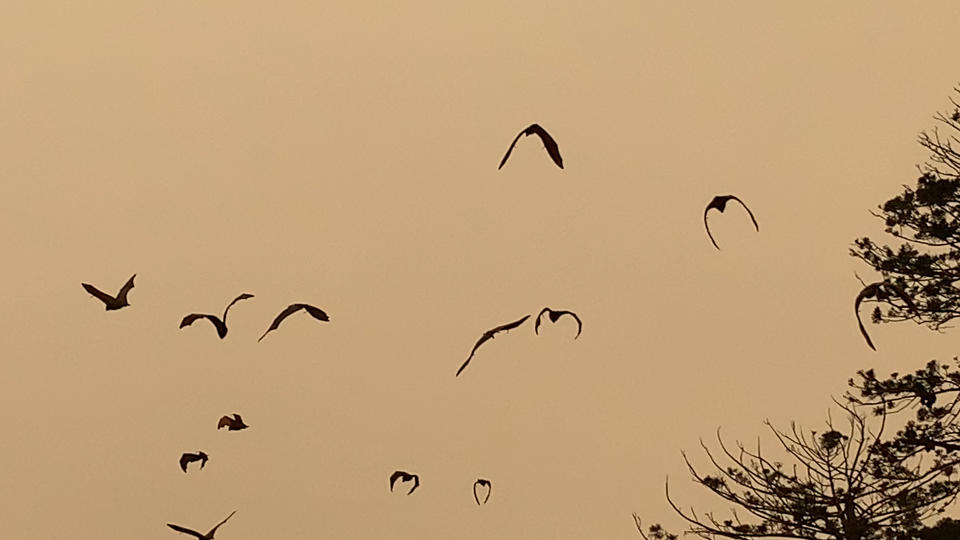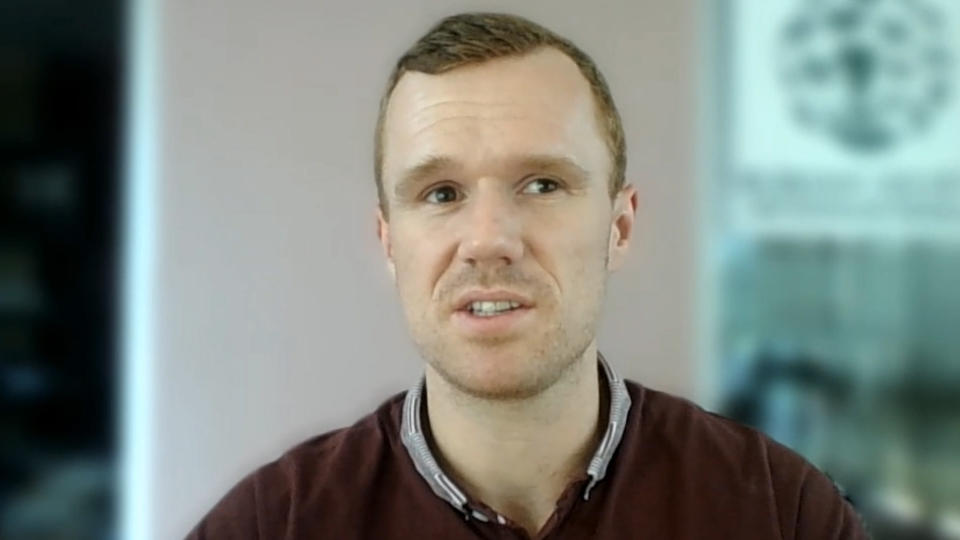'Cooking alive': The desperate fight to save Australian wildlife from collapse
With Australian temperatures smashing previous records, wildlife carers across the country are bracing for the collapse of bat colonies.
When temperatures reach 42 degrees flying foxes cannot maintain regular body function and they fall from the trees and die.
As of 3pm on Thursday, the temperature hit 41 degrees in Singleton, NSW.
Ann McSweeney, from Wildlife ARC, was alone in the park, hoping the worst would not happen as bats were flapping their wings and panting like puppies to try and cool themselves.
She’d been calling council for hours trying to get sprinkler systems recently installed switched on to cool the animals.

Around the base of one of the large nesting trees in the park is a reminder of the potential for devastation – gnarled bodies of dead baby bats.
Ms McSweeney has been a volunteer bat carer for 15 years and nursed countless animals back to health. The park in Singleton holds special significance to her: she sees herself as the protector of the colony.
“A few years ago, I lost my husband in October and bat season’s in November,” she said.

“To help me get through everything I used to come here and they helped me.
“So, I’m paying my dues back to my animals... This park is part of me because they help me out.”
Temperatures threaten to hit 42 degrees
Ms McSweeney said there was no feeling like bringing a fallen bat back to life. Even when they’re unconscious and dying in her arms, she refuses to give up on them and she’s brought back numerous bats from the brink of death.


Two years ago, hundreds came down in the park due to heat.
“There was nothing you could do, it was bad,” she said.
Despite her inability to save them all, she was determined to help as many as she could.
“What I try to tell myself is everyone we save is one we can put back,” she said.
Speaking with Yahoo News Australia in the park, she described the scene that day. “We had the babies and bats lined up along that path,” she recalled.
“This one here is called the death tree because they seem to come from over here and into here,” she said as she walked over to a sick looking tree is the far corner of the park.
Suddenly the bats flee from the tree. The sprinkler system has been turned on.

The bats roost back in the tree, lap up the running water from the bark.
The app on our phones says the temperature is about to hit 42 degrees, but Ms McSweeney is hopeful that the sprinkler system will be enough to keep them cool.
“The council has done a wonderful job,” she says.
She turns her attention to Saturday which is supposed to be even hotter. The ongoing high temperatures will see the bats exhausted.
“Today has been a good day, no bats have died and no one has yelled at us for trying to look after them,” she said. “A lot of people hate the bats.”
‘Basically cooking alive’
Evan Quartermain, from Humane Society International, told Yahoo News Australia that this year, grey headed flying fox mothers have been uncharacteristically dropping their young.
Mothers begin to bond with their babies during birth, chatting back and forth as soon as the baby shows its head. But due to a lack of food from ongoing drought and bushfires, the highly social animals have had to abandon their children to survive.
“We could see a serious long-term impact on the grey headed flying fox population from what’s happening,” he said.

“The starvation event has been seeing hundreds and hundreds, into the thousands die over some weeks, but when this heat wave hits later this week we could all of a sudden see those numbers rise to tens of thousands in a matter of hours.”
Warning not to touch bats found 'starving to death' in the wild
Revealed: The biggest challenge to saving fire-ravaged koala population
'Absolute tragedy': Koala numbers decimated after bushfires destroy key habitats
“And that’s the sort of situation where wildlife carers simply can’t respond to it, it’s too overwhelming,” he said. “And the flying foxes are basically cooking alive.”
Flying foxes are key to the recovery of forests devastated by bushfires as they cross pollinate trees across much greater distances than birds or insects can.
With climates changing due to manmade carbon pollution, the survival of Australia’s flying foxes remains a concern.
Most parks, such as those in nearby Cessnock, do not have sprinkler systems installed in them and Saturday is expected to be a dark day for our bats.
Members of the public who encounter sick or injured bats should not handle them, and instead contact a registered wildlife rescue group or vet.
The author, Michael Dahlstrom, is a registered bird carer with Wildlife Arc.
Do you have a story tip? Email: newsroomau@yahoonews.com.
You can also follow us on Facebook, Instagram and Twitter and download the Yahoo News app from the App Store or Google Play.




